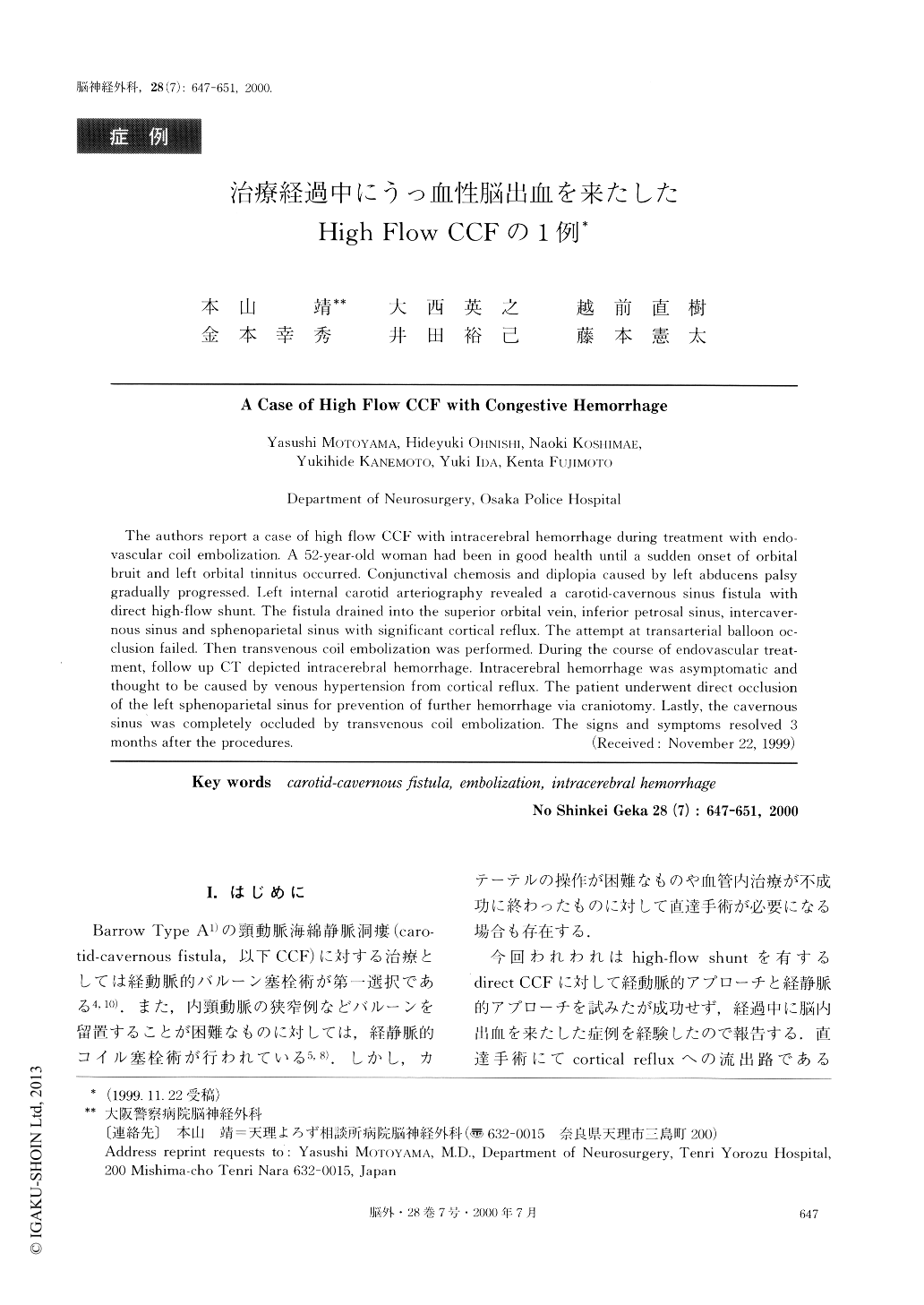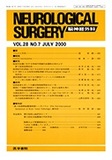Japanese
English
- 有料閲覧
- Abstract 文献概要
- 1ページ目 Look Inside
I.はじめに
Barrow Type A1)の頸動脈海綿静脈洞瘻(caro-tid-cavernous fistula,以下CCF)に対する治療としては経動脈的バルーン塞栓術が第一選択である4,10).また,内頸動脈の狭窄例などバルーンを留置することが困難なものに対しては,経静脈的コイル塞栓術が行われている5,8).しかし,カテーテルの操作が困難なものや血管内治療が不成功に終わったものに対して直達手術が必要になる場合も存在する.
今回われわれはhigh-flow shuntを有するdirect CCFに対して経動脈的アプローチと経静脈的アプローチを試みたが成功せず,経過中に脳内出血を来たした症例を経験したので報告する.直達手術にてcortical refluxへの流出路であるsphenoparietal sinus(以下SpPS)の閉塞を行った.術後残存したCCFに対しては再度経静脈的アプローチにてコイル塞栓術を完成させた.
The authors report a case of high flow CCF with intracerebral hemorrhage during treatment with endo-vascular coil embolization. A 52-year-old woman had been in good health until a sudden onset of orbital bruit and left orbital tinnitus occurred. Conjunctival chemosis and diplopia caused by left abducens palsy gradually progressed. Left internal carotid arteriography revealed a carotid-cavernous sinus fistula with direct high-flow shunt. The fistula drained into the superior orbital vein, inferior petrosal sinus, intercaver-nous sinus and sphenoparietal sinus with significant cortical reflux. The attempt at transarterial balloon oc-clusion failed. Then transvenous coil embolization was performed. During the course of enclovascular treat-ment, follow up CT depicted intracerebral hemorrhage. Intracerebral hemorrhage was asymptomatic and thought to be caused by venous hypertension from cortical reflux. The patient underwent direct occlusion of the left sphenoparietal sinus for prevention of further hemorrhage via craniotomy. Lastly, the cavernous sinus was completely occluded by transvenous coil embolization. The signs and symptoms resolved 3 months after the procedures.

Copyright © 2000, Igaku-Shoin Ltd. All rights reserved.


